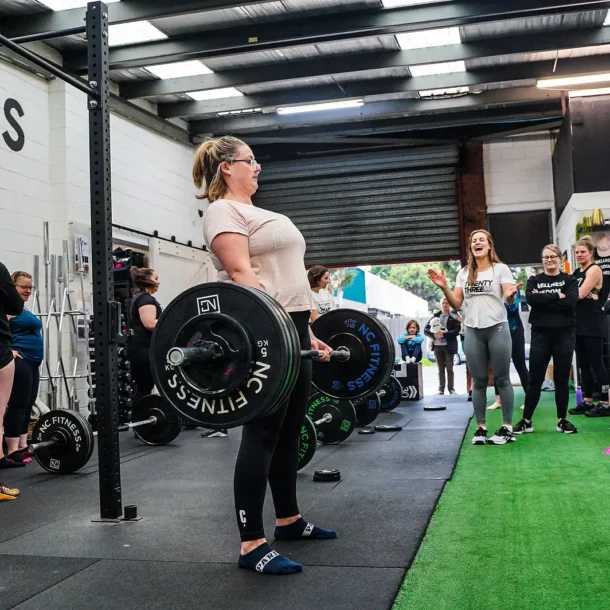

Is this you? Have you ever taken notice of your rib cage angle? Have you ever noticed your lower ribs sticking out, almost like a ‘second boob’? Or maybe you have noticed after having kid/s your blouses and dresses are tighter around you ribs and back.
Many people notice this and think this is just the way it is, without knowing that there are very practical steps you can take to improve it.
But it’s not just about appearance – rib flare can cause back pain, poor posture, a weakened core, and even trouble healing Diastasis Recti (DR).
Studies reveal that for women who deliver via Caesarean, are more likely to experience a wide infrasternal angle and slower to improve DR.
In this blog, I will be sharing some practical tips that have helped me and countless clients to improve rib cage positioning through breathing, mobilisation, and strengthening exercises, and I’m excited to share these tips with you.

Rib flare often shows up in two ways. Firstly, it can cause the ribs to flare forward, increasing the curve in your lower back and messing up your spinal alignment.
Secondly, it can be spotted by looking at the infrasternal angle, the angle between your ribs right under your chest. In both cases, your ribs are stuck in an inhalation state.
Here’s something fascinating: rib flare is common during pregnancy, but many women might have had a predisposition to it even before becoming pregnant.
The condition becomes more noticeable due to the abdominal wall weakening and thinning during pregnancy. Typically, if you have rib flare, you might find inhaling easier than exhaling, leading to shallow breathing.
Shallow breathing presents with its own set of issues, but for new mums, taking deep breaths is so crucial for promoting emotional wellbeing.


Let’s dive into the causes of rib flare. It often stems from poor breathing patterns over time or even genetics. Our ribs are dynamic, moving with each breath. Poor posture, stress, pregnancy, and constantly pulling in your navel can all contribute to shallow breathing, which in turn can cause rib flare. In many cases, re-learning proper breathing is essential.
Start with 360-degree breathing techniques. You can try these in various positions, like the 90/90 position, side-lying, or even in child’s pose. These exercises help you engage your diaphragm and encourage proper breathing patterns.
Mobilisation is key! Try foam rolling or smashing your lats to release tension. Also, the arm wall slides exercise is fantastic. Sit with your back against the wall, arms straight, and slowly raise them, keeping your core engaged. The doorway lat stretch is another great move – stand in a doorway, grab the frame, and gently stretch your lats by pushing your glutes back.
With a rib flare, middle back tension is common. Work on releasing the thorasic and paraspinals with rotations and myofacial release.
Be more aware of your posture and ensure that you work on correctly stacking your ribs over hips. There is a tendency for people to lock their knees, which sends they hips forward and then changes posture up the chain.
Overhead and pulling movements should also be considered. Where there is a lack of mobility, there is a tendency to thrust the ribs more forward and out, which puts more strain on lower back and perpetuates problem.
The type of exercises you do depends on your type of rib flare. If you have a narrow infrasternal angle, focus on exercises like dead bug progressions and Palloff rotations to strengthen your internal obliques and transverse abdominals. For someone with a narrow angle, the rectus abdominals are usually overactive and grippy. Typically these same people have a tendency to put pressure down on their pelvic floor too.
If you have a wide angle, you need to to work to get your external obliques working to pull your ribs down. Be sure to assess transverse abdominal first and ensure these are working before anything else. Exercises such as side planks, McGill Crunches, crunches and woodchop movements can be beneficial to help improve core imbalance.
Lastly, improving strength associated with posture will also help. This includes shoulder organisation and strength through your mid back.
Remember, exercise prescription varies based on the type of rib flare you have, so it’s crucial to tailor your routine accordingly.
Managing rib flare has been a game-changer for me, improving my posture, core strength, and overall wellbeing.
If you would like some expert guidance or advice on this area, be sure to book a discovery call with the team or sign up for our Postpartum trial and assessment for $49.







